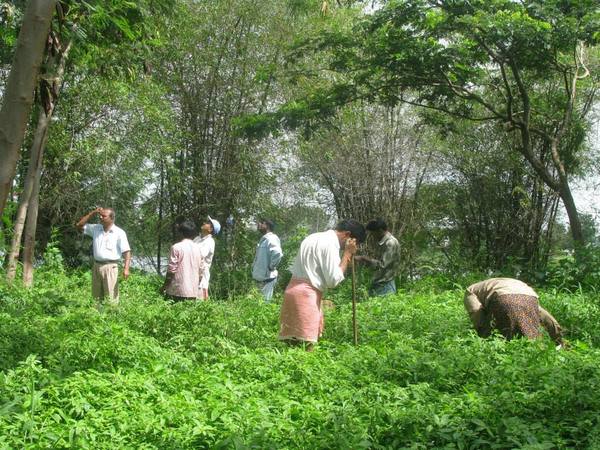
File pic. Courtesy: Jayakrishnan
On 21st April 2014, the Counsels of Bruhat Bengaluru Mahanagara Palike (BBMP) placed before the Chief Justice of Karnataka High Court D H Waghela and Justice B V Nagarathna a compilation of tree planting activities in Bangalore. The document claims that during the years 2007-2013, the forest wing of the BBMP has planted 10,75,388 trees in the city and that on an average (across 6 years) 63.5% of the saplings have survived.
The document was supplied as part of the suo moto proceedings initiated by the High Court in Writ Petition 7288/2011, responding to concerns over mass tree felling in Bangalore raised by Justice D V Shylendra Kumar who was Judge of the Karnataka High Court (now retired). This petition is being heard in connection with Environment Support Group’s PIL (WP No. 7107/2008) that challenges road widening as being illegal, causing mass felling of trees (the living heritage of Bangalore), resulting in massive displacement of residential and commercial communities and jeopardising the rights of pedestrians, cyclists, differently abled, street vendors, etc.
The document on tree planting by BBMP provides various details of the number of saplings planted in almost every neighborhood across the city. Details of the streets, neighborhoods and localities where planting has taken place has been provided.
The Hon’ble High Court will continue hearing these matters on Friday, 25th April 2014. Prior to this, ESG wants to verify the claims of tree planting made by BBMP. Details of what Bangaloreans can do are here.
What we need Bangaloreans to do
- Download the document accessible at ESG’s website (www.esgindia.org). It has many sheets providing details of trees planted in different divisions.
- Pick one or more rows from any of these sheets that provides details of the number of trees planted and that have survived: in a neighborhood or locality or street.
- Count all trees that appear to be 6 years or younger.
- A thumb rule is to measure at chest height – 4.5 feet from ground – the circumference of the tree and it would be approximately 12 inches or less.
- Once you complete your count, please email your report to shashi@esgindia.org with the subject: Bangalore Tree Count (It’s important you retain this subject).
- Your report should provide accurate details of the particular rows from the document you verified and how many young trees you found in that particular street, neighborhood, etc. Please also provide your full name, address and contact details.
- If there are non-BBMP tree plantation initiatives that you know of in your neighbourhood, do not include them in this.
This information is required latest by Thursday noon, 24th April, which would be compiled and presented to the Court the next day.
Related Articles
ESG Workshop :Importance of Weltands in Urban Spaces
Documenting the trees in Bannerghatta
Why are Bangalore’s trees falling?
Dear all
This is to keep you informed that, at Chikka Lakshmaya layout, DRC post, Bangalore-560029, Ward No;63 ( Mr Mahesh babu is our BBMP counselor) ,
Since we don’t have any park near by to our are also we don’t have any trees on the road.
However all people in that particular area is interested in planting trees, and see that the environment is green and we get some fresh oxygen also the birds in Bangalore has vanished, we wanted to create the same Garden city back when we all was a child.
We wanted all our children to grow with the nature where there is trees , birds and flowering trees, with good blossom smell.
Can you please help us in creating Bangalore back to garden city by providing tree and tree guards for each house, so that we will take the responsible of taking care of all the plants that are there in our area.
I am hoping for the humble reply from your end.
Regards
Selvan
8884410915